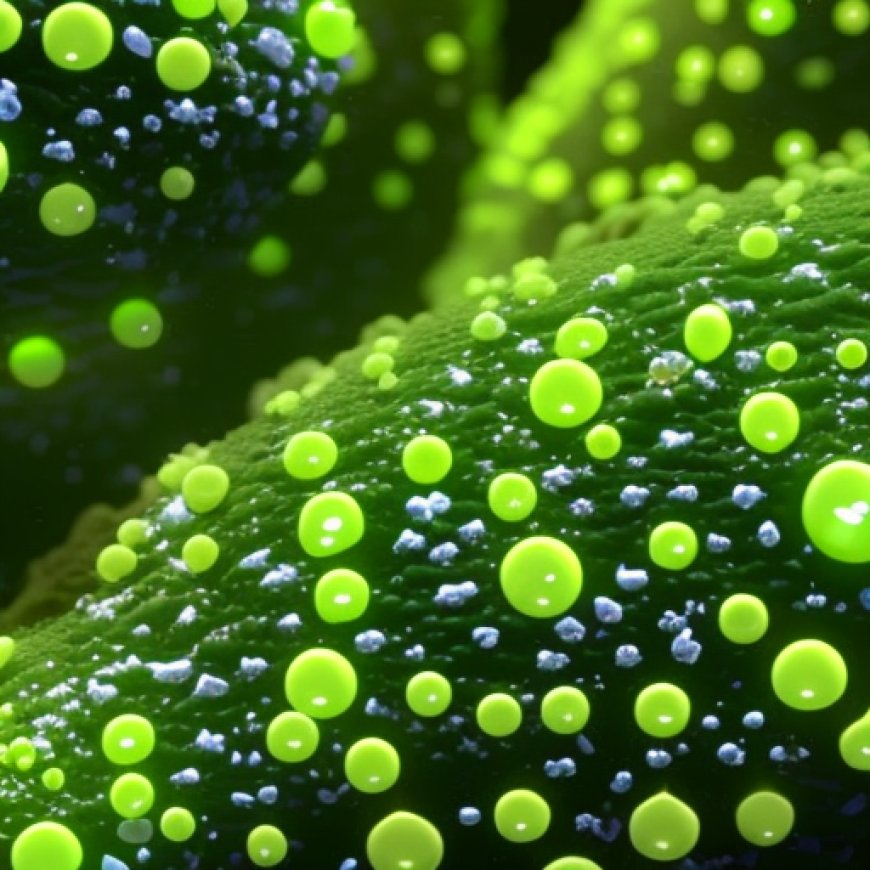“Rock snot” cells found in algae samples in Oscoda County river
“Rock snot” cells found in algae samples in Oscoda County river Michigan Public


Didymo Cells Found in Au Sable River: A Threat to Ecosystem
In late April, Didymo cells, often called “rock snot,” were discovered in a section of the Au Sable River. The monitoring conducted by Michigan Trout Unlimited, as reported by the Michigan Department of Natural Resources (DNR), identified the presence of Didymo cells. This finding raises concerns about potential ecological problems.
Sampling Results
- Several Didymo cells were found at the Parmalee Canoe Launch off North Red Oak Road.
- One cell was detected just downstream at the Whirlpool access off West Cherry Creek Road.
- No Didymo cells were found further downstream or in several tributaries that were sampled.

Michigan Trout Unlimited via EGLE
Potential Ecological Harm
Environmental officials are expressing concern over the presence of Didymo cells due to the potential ecological harm they can cause. Billy Keiper, an aquatic biologist with the Michigan Department of Environment, Great Lakes and Energy (EGLE), explains that Didymo can grow long stalks or blooms that cover the stream bed. This can lead to problems for anglers and fish as Didymo crowds out other food sources in the ecosystem.
Keiper further states that the microscopic nature of the discovered cells raises questions about their presence in the system. It is unclear how long they have been present or if this is a new introduction. The timeline of their presence is difficult to determine.
Preventing Spread and Mitigation Measures
EGLE recommends the following measures to prevent the spread of Didymo:
- Clean gear and boats after each use.
- Rinse gear with hot water for a few minutes, preferably over 140 degrees Fahrenheit to kill the specimens.
- Use an all-purpose cleaner like Formula 409 antibacterial.
- Consider using bleach or Virkon Aquatic as cleaners.
- Use different gear for each stream and ensure gear is cleaned, drained, and dried properly.
SDGs, Targets, and Indicators
1. Which SDGs are addressed or connected to the issues highlighted in the article?
- SDG 14: Life Below Water – Protect and restore water-related ecosystems and promote their sustainable use.
- SDG 15: Life on Land – Protect, restore, and promote sustainable use of terrestrial ecosystems, sustainably manage forests, combat desertification, and halt and reverse land degradation and halt biodiversity loss.
2. What specific targets under those SDGs can be identified based on the article’s content?
- SDG 14.1: By 2025, prevent and significantly reduce marine pollution of all kinds, in particular from land-based activities, including marine debris and nutrient pollution.
- SDG 15.1: By 2020, ensure the conservation, restoration, and sustainable use of terrestrial and inland freshwater ecosystems and their services, in particular forests, wetlands, mountains, and drylands, in line with obligations under international agreements.
3. Are there any indicators mentioned or implied in the article that can be used to measure progress towards the identified targets?
- Indicator for SDG 14.1: Proportion of coastal and marine areas protected to conserve biodiversity.
- Indicator for SDG 15.1: Proportion of important sites for terrestrial and freshwater biodiversity that are covered by protected areas.
Explanation:
The presence of Didymo cells in the Au Sable River raises concerns about the ecological harm they can cause. This is connected to SDG 14 (Life Below Water) as it aims to protect and restore water-related ecosystems. The Didymo cells can cover up the stream bed and crowd out other food sources, impacting the ecosystem and fish populations. This aligns with SDG 15 (Life on Land) as it focuses on the protection and sustainable use of terrestrial ecosystems.
Based on the article’s content, the specific targets that can be identified are SDG 14.1 and SDG 15.1. SDG 14.1 aims to prevent and reduce marine pollution, including pollution from land-based activities. SDG 15.1 focuses on the conservation, restoration, and sustainable use of terrestrial and inland freshwater ecosystems.
The article does not explicitly mention indicators for measuring progress towards these targets. However, relevant indicators could include the proportion of coastal and marine areas protected to conserve biodiversity (for SDG 14.1) and the proportion of important sites for terrestrial and freshwater biodiversity covered by protected areas (for SDG 15.1).
4. Table: SDGs, Targets, and Indicators
| SDGs | Targets | Indicators |
|---|---|---|
| SDG 14: Life Below Water | 14.1: By 2025, prevent and significantly reduce marine pollution of all kinds, in particular from land-based activities, including marine debris and nutrient pollution. | Proportion of coastal and marine areas protected to conserve biodiversity. |
| SDG 15: Life on Land | 15.1: By 2020, ensure the conservation, restoration, and sustainable use of terrestrial and inland freshwater ecosystems and their services, in particular forests, wetlands, mountains, and drylands, in line with obligations under international agreements. | Proportion of important sites for terrestrial and freshwater biodiversity that are covered by protected areas. |
Copyright: Dive into this article, curated with care by SDG Investors Inc. Our advanced AI technology searches through vast amounts of data to spotlight how we are all moving forward with the Sustainable Development Goals. While we own the rights to this content, we invite you to share it to help spread knowledge and spark action on the SDGs.
Fuente: michiganpublic.org

Join us, as fellow seekers of change, on a transformative journey at https://sdgtalks.ai/welcome, where you can become a member and actively contribute to shaping a brighter future.







